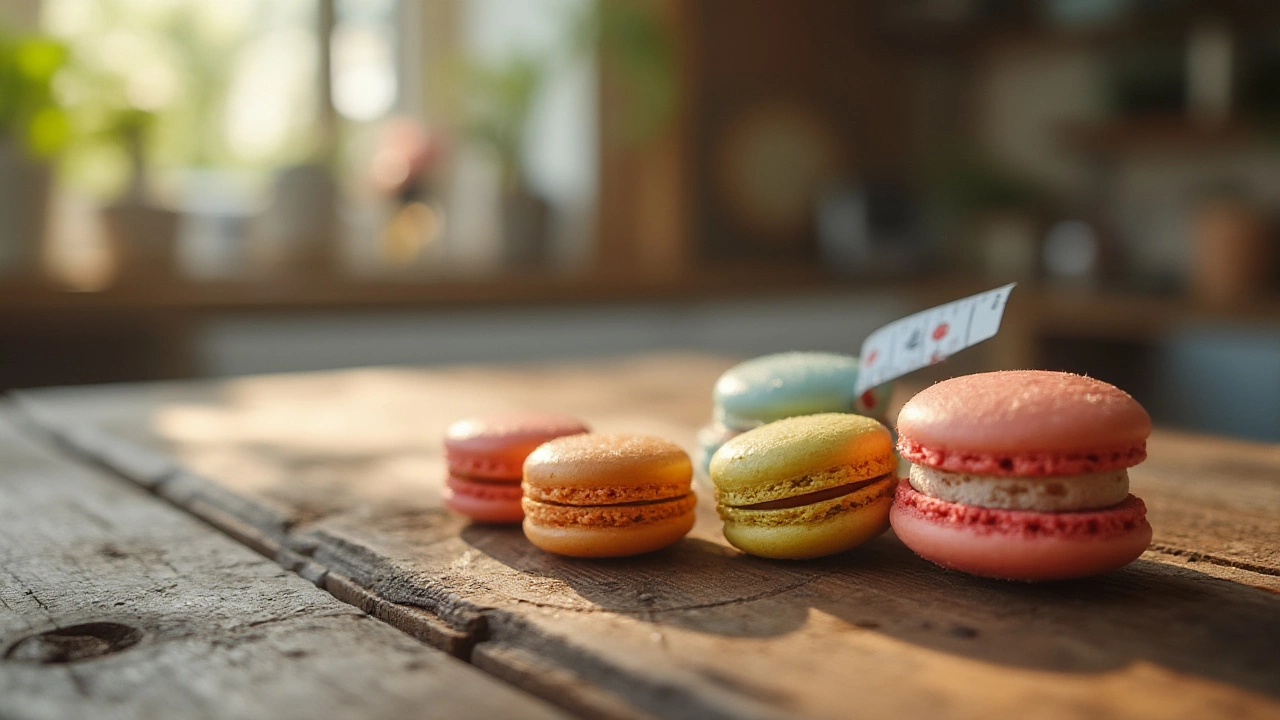
If you’ve ever watched someone pick out a macaron at a bakery, you’ll notice there's a bit of hesitation, a head tilt, eyes scanning the rows of pastel beauties. It’s almost like choosing a gemstone. But the size isn’t just about aesthetics or “cute-ness,” as my niece once insisted. The diameter of a macaron can change everything—taste, texture, even your overall macaron experience. If you’ve ever wondered why the ones in Paris always seem so satisfying (even though they're roughly the same size everywhere you go), read on. Size is a big deal in the world of these delicate French treats, and today, we'll crack open the secret to the ideal macaron—not too small, not too big, but juuust right.
The Roots of the Classic Macaron Size
No one eats a macaron just for the sugar rush. It’s a ritual: crisp shell, then a chewy bite, the filling marrying the two ‘cookie’ halves perfectly. Purists—yes, they exist, and they’re vocal—agree the ideal macaron size has roots in classic French patisseries. The legendary Ladurée, credited with popularizing the modern macaron, standardizes its size at about 3.5 cm (about 1.4 inches) in diameter. This is not an accident. A typical Parisian shop carefully pipes each shell consistently to preserve the “macaron bite experience”—firm on the outside, slightly yielding, and then an explosion of flavor from the filling.
The macaron’s ideal diameter leans on three main factors: balance of shell to filling, texture integrity, and visual perfection. Go too small (say, less than 3 cm), and you risk overbaking or ending up with crisp shells that lack that sought-after chewiness. Make them too large (past 4-4.5 cm), and you’re basically chomping into a meringue cake, losing that delicate contrast. French regulations for patisserie competitions (like Meilleurs Ouvriers de France) even specify that competition macarons should be between 3-4 cm in diameter.
This sizing standard became a sort of “golden rule” for professional bakers. It's not just tradition—it’s engineering for taste. The bite-size rounds deliver precisely what the treat promises: manageable, aesthetically consistent indulgence that doesn’t overwhelm. Of course, some creative bakers in the US and Japan have veered into mega-macaron territory for special events or visual wow, but those are the dessert world’s equivalent of super-sized tourist hats—fun but not the true spirit of the thing.
How Size Affects Flavor and Texture
Here’s the twist: changing the diameter of a macaron will subtly shift everything about how you taste it. With traditional 3.5 cm macarons, you get an ideal shell-to-filling ratio. Both parts show up in just the right proportion with every bite. Science gets involved too. At this size, the shells bake evenly and the internal moisture stays where it’s supposed to, resulting in that iconic gentle chew.
Try doubling the diameter—so 7 cm instead of 3.5 cm—and the dynamics flip. The shells end up thicker, and you’ll need significantly more filling, or the treat will be bland and dry. The larger shells are also trickier to bake evenly in the home oven: one side might crisp up fine while the other goes a little too soft. When I first tried making “giant” macarons for my husband’s birthday (he loves everything bigger in food form, go figure), I noticed the centers stubbornly stuck to the parchment while the edges browned too quickly. Not exactly the bakery-quality result I was after.
On the flip side, mini macarons (around 2-2.5 cm) look adorable, but often wind up too crunchy, and the filling can easily overpower the shell if you’re not careful. Most French pastry chefs, when they make petits-fours style macarons, adjust both the shell size and filling thickness, balancing texture so the miniatures don’t just feel like sugar bombs.
| Macaron Diameter | Shell-to-Filling Ratio | Texture |
|---|---|---|
| 2cm (Mini) | More shell, less filling | Crunchier, less chewy |
| 3.5cm (Classic) | Balanced | Crisp + Chewy |
| 5cm (Large) | More filling needed | Shells risk being too thick, less chewy |
The best advice? Stick with the classic macaron size if you’re aiming for that perfect “bite-and-melt” sensation. It’s not about following rules for the sake of rules—it’s about what feels right on the tongue.

Trends and Variations in Macaron Sizes Globally
While France holds the macaron standard close, the rest of the world loves to riff. In Japan, bite-sized macarons are sold in cute packs, sometimes as small as 2 cm, reflecting the country’s love of dainty, pop-in-your-mouth treats. Australian patisseries have started offering “macaron towers” for weddings, with sizes ranging from traditional to slightly larger 4 cm rounds for dramatic visual effect.
Here in the US, super-sized macarons (think 6-8 cm in diameter) sometimes appear at festivals or as jumbo novelty items in bakeries. They’re often split and filled like ice cream sandwiches or even stacked with toppings. Instagram, naturally, is full of oversized macarons, but bakers report these versions are more complicated for home cooks—especially since even heat distribution in US ovens isn’t as reliable as commercial convection ovens in France. If you’re chasing perfect consistency, you’ll notice these XL versions just don’t provide the same textural delight.
Some creative bakers now play with mini macarons as statement toppings for cakes or as “macaron pops”—tiny, colorful shapes mounted on sticks and served at parties. This trend brings playful variety, but even then, the 3.5 cm round remains the backbone of most serious macaron production. Ladurée, Pierre Hermé, Maison Kayser—these patisseries might experiment with flavor and color, but rarely with basic sizing.
What’s really interesting is how the ideal size holds steady as a “marker” of authenticity. In blind taste tests in Paris in 2023, over 75% of participants described classic 3.5 cm macarons as “satisfying” and “well-balanced.” Too large or too small, and the feedback dropped off fast.
Practical Macaron Sizing for Home Bakers
If you’ve felt frustrated piping crazy, uneven circles on your silicon mats, you’re not alone. The key to consistent macaron size at home is preparation. Most professional bakers use silicone mats printed with 3.5 cm rings—so grab one if you can. If not, just print out a 3.5 cm circle template and slide it under your parchment paper. Don’t be stingy with the piping bag size either; a 1 cm round tip provides plenty of control.
Getting macarons all the same diameter helps them bake evenly and match up perfectly for filling. Make sure you’re piping straight up (vertical piping is way easier than swirling), and don’t try to skimp on resting time before baking. If you really want to nail that perfect shell, go for batter consistency that’s flowy but not runny—think slow-motion “lava.”
Here’s a trick: after piping, gently tap your baking tray on the counter to get air bubbles out and flatten the tops. If you see the batter spread well inside the ring, you know the sizing is right. If it leaks too far outside, pipe a little less batter next time.
- Invest in a silicone baking mat with 3.5 cm rounds printed on it.
- Rest piped macarons until they form a slight skin—usually around 30 minutes to 1 hour, depending on humidity.
- Bake at 150°C/300°F for about 12-15 minutes, turning the tray halfway for even baking.
- Wait until shells are completely cool before removing from the mat—this helps prevent sticking and cracking.
- Pair shells with their closest diameter match before filling for the neatest sandwiches.
Don’t stress every imperfection. The pursuit of identical macarons is more about developing an eye and feel than robotic precision. Even in high-end patisseries, every now and then there’s a ‘character’ macaron that’s just a hair off but tastes wonderful.

Frequently Asked Questions About Macaron Sizing
Can I use cookie cutters to size my macarons? Not really. Cookie cutters work for rolled dough, not piped batter. Your best friend is actually your piping technique and a proper template under your parchment.
How many macarons do you get per batch at classic size? For a standard recipe using 100g of egg whites, 100g of almond flour, and 100g of powdered sugar, you’ll make about 40-50 shells (20-25 macarons) at 3.5 cm diameter.
Does altitude affect macaron sizing/texture? High altitudes can dry out shells or cause them to rise unevenly. If you live in Denver or somewhere similar, err on the side of using a slightly stiffer batter and baking at a slightly lower temperature for a bit longer. Monitor your shells—if they spread more than usual, pipe a bit smaller next time.
Could I make heart shapes or other fancy designs in classic size? Yes, just keep the major dimension (width or height) to about 3.5 cm. Fun shapes are totally allowed—just remember your shells should be about the same size to sandwich together.
Is there an “official” international standard? No strict governing body, but major competitions, pastry schools, and brands use the classic 3.5 cm round as the benchmark.
If all this sounds overwhelming, give yourself a break. Macarons are notoriously stubborn for even seasoned bakers. My first ones looked like puffy pancakes, and my husband Alaric called them “amusingly weird.” But keep at it, and you’ll discover the perfect size isn’t just the one that looks good, but the one that brings a smile with every bite. And at 3.5 cm, that just seems to happen more often than not.


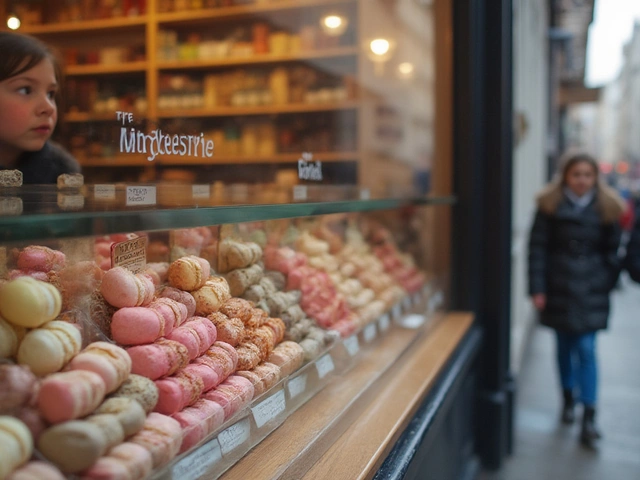
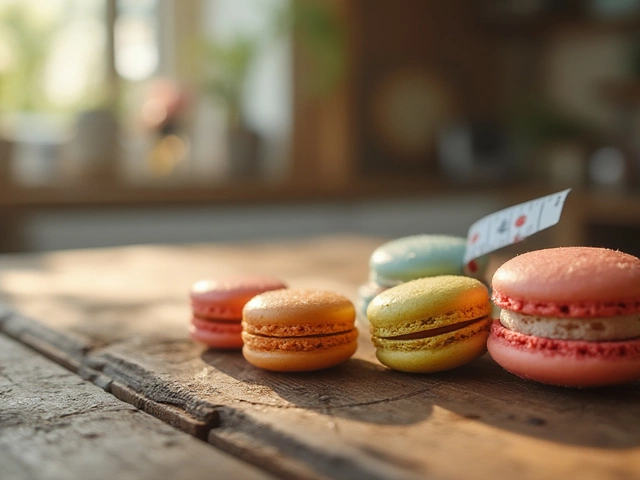

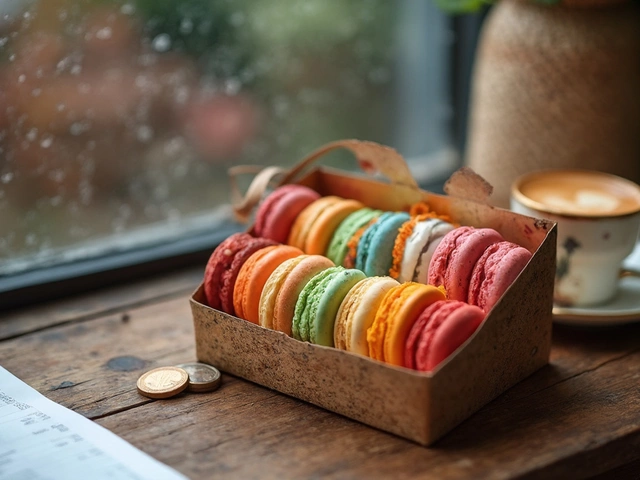


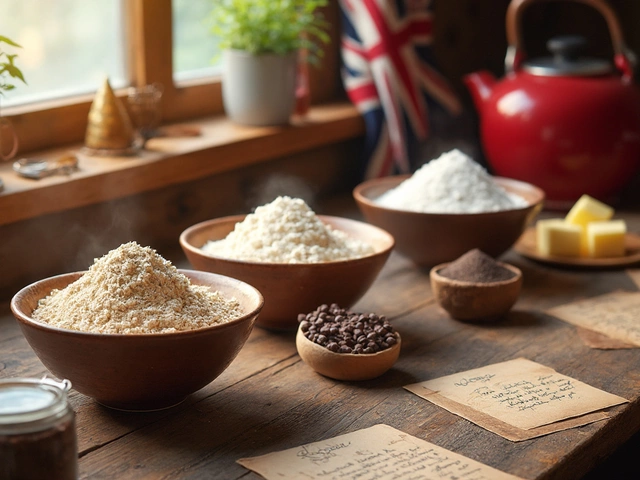
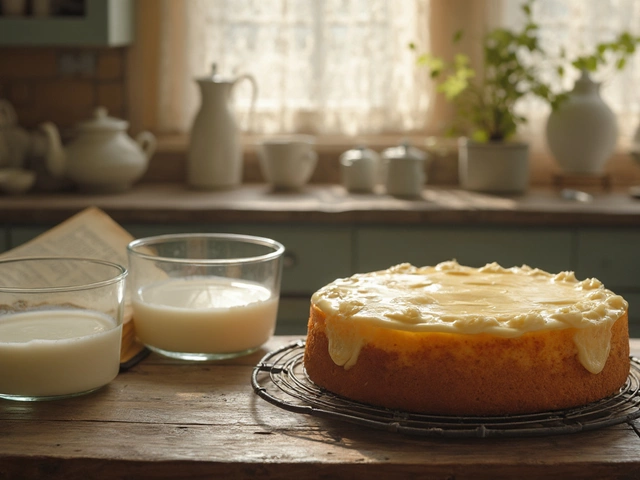
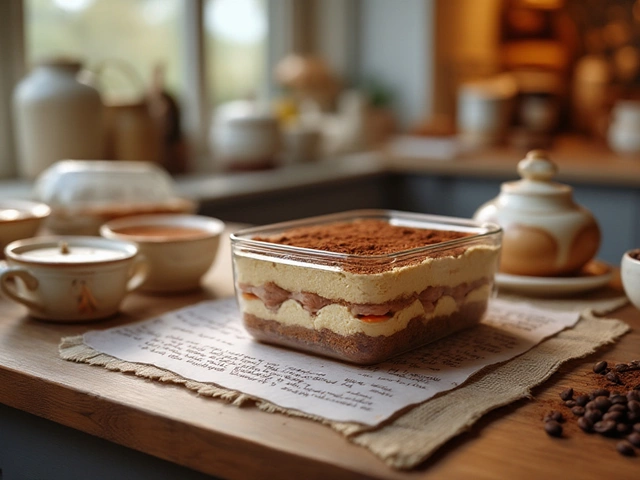
Write a comment